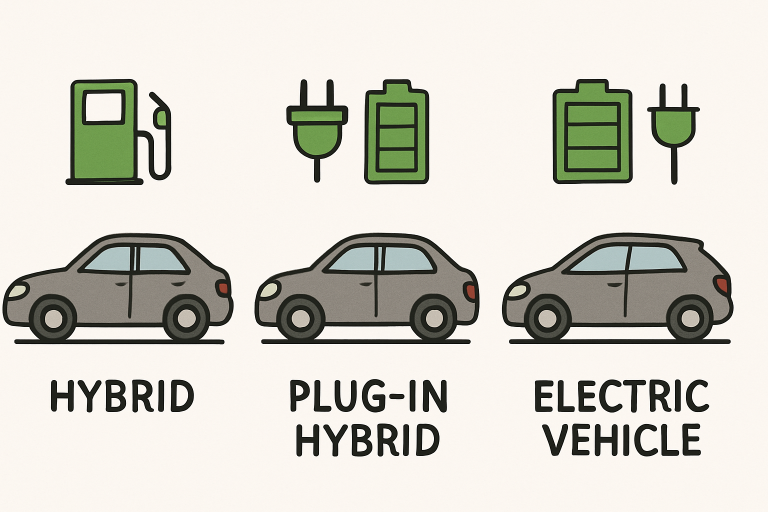Introduction
With the automotive world shifting rapidly, more drivers than ever are weighing the advantages of hybrid and electric vehicles. However, sorting through the technical jargon and numerous models can feel overwhelming. This guide is designed to help consumers understand the essential differences, benefits, and considerations in choosing hybrid and fully electric vehicles, empowering them to make a confident, informed purchase. For those exploring advanced vehicle technology or considering a switch to electrified cars, learn more about innovative models and the latest offers from reputable dealers.
Electrified vehicles offer efficiency, sustainability, and a modern driving experience. This guide considers your needs and preferences and covers electrified vehicles’ core types, performance, cost factors, infrastructure requirements, and potential environmental impact. As adoption increases, resources provide helpful context for new buyers and current owners.
Types of Electrified Vehicles
Electrified vehicles fall into several key categories, each offering unique features and advantages to suit different driving habits and charging capabilities:
- Hybrid Electric Vehicles (HEVs): These models pair a traditional gasoline engine with an electric motor. The battery and engine are recharged by regenerative braking, so there’s no need to plug into an external power source. HEVs typically blend fuel efficiency and practical range, making them an excellent choice for those not ready to rely solely on electricity.
- Plug-in hybrid Electric Vehicles (PHEVs): Similar to HEVs, PHEVs have a larger battery pack that can be plugged in for charging. This design lets drivers travel a certain distance—often 20 to 40 miles—solely on electric power before the gasoline engine takes over for longer trips.
- Battery Electric Vehicles (BEVs): Powered entirely by electricity, BEVs rely on large-capacity batteries that require external charging. These vehicles are increasingly seen as the future of clean mobility, as they emit no tailpipe pollutants and offer low-maintenance driving.
Benefits of Hybrid and Electric Vehicles
Embracing hybrid and electric vehicles brings a host of advantages for everyday drivers, including both economic and environmental gains:
- Superior Fuel Efficiency: Hybrids and plug-in hybrids routinely deliver better miles per gallon than their conventional counterparts. Electric vehicles, which use no gasoline, can mean significant fuel savings over time.
- Reduced Emissions: Battery electric vehicles produce no exhaust emissions, and hybrids emit far less pollution than traditional cars, benefiting urban environments and global air quality.
- Instant Performance: Electric motors instantly deliver peak torque, translating to responsive acceleration and a quietly smooth ride that pleases new and seasoned drivers.
Charging Infrastructure and Considerations
Charging access is rapidly improving, making it easier for drivers to keep their electrified vehicles powered at home, work, or on long journeys:

- Home Charging: Level 2 chargers can be installed in garages or driveways, providing a full charge overnight for convenience and lower utility rates.
- Public Charging Stations: Networks of publicly available chargers—including fast-charging stations—are now found in cities, shopping centers, and highways, drastically reducing range anxiety for BEV drivers.
- Cost Considerations: Home charging is typically less expensive than fueling with gasoline. Rapid or fast public charging may cost more, but it remains competitive compared to traditional fuel prices.
When selecting an EV, drivers should research plug compatibility, average charging times, and local public infrastructure. The AARP Smart Guide to Electric Cars offers practical advice for navigating the world of EV charging and ownership.
Cost Analysis and Incentives
Although electrified vehicles can cost more upfront, a comprehensive cost analysis often reveals significant long-term savings thanks to incentives and lower running costs:
- Government Incentives: Federal tax credits, state rebates, and local incentives may be available for new EV and PHEV purchasers, decreasing acquisition costs and boosting affordability.
- Lower Ongoing Maintenance: With fewer moving parts, electric vehicles generally require less routine maintenance. There are no oil changes and fewer brake repairs, which adds to long-term cost savings.
- Fuel and Energy Efficiency: Electricity is often less expensive than gasoline per mile, and hybrids dramatically cut fuel usage through electric assist.
Environmental Impact
One of the strongest arguments for choosing an electrified vehicle is its potential for reducing environmental harm:
- Lower Greenhouse Gas Emissions: Driving a BEV means emitting zero tailpipe emissions. Even accounting for power generation, EVs generally have a smaller carbon footprint than gasoline-powered counterparts.
- Cleaner Air, Healthier Communities: Reductions in pollutants like nitrogen oxides and particulates help create safer, healthier cities, especially in dense urban areas.
Future Trends in Electrified Vehicles
The evolution of the electrified vehicle market shows no sign of slowing down. Advances and policy trends will continue to shape what drivers can expect in the years to come:
- Better Batteries: Ongoing research is leading to batteries with greater range, faster charging times, and potentially lower costs, which will increase their appeal to a broader audience.
- Expanding Charging Networks: Significant investment in charging infrastructure is making it more convenient than ever to own an EV, regardless of driving habits or geography.
- Stronger Policy Support: Stricter emissions rules, financial incentives, and city planning efforts all point to an increased share of hybrid and electric vehicles on the road.
Whether you’re just beginning your research or ready to explore the latest models in person, understanding these fundamentals will help you navigate the road ahead and make the smartest choice for your budget, lifestyle, and values.
Final Thoughts
Making a smart vehicle purchase requires preparation, patience, and informed decision-making. By setting a realistic budget, comparing options, and understanding key features, buyers can avoid common pitfalls and make choices that truly fit their needs. Negotiating confidently and reviewing financing terms carefully adds further protection and peace of mind. With the right approach, purchasing a new car becomes less overwhelming and more empowering, leading to a vehicle that brings satisfaction, reliability, and value for years to come.








